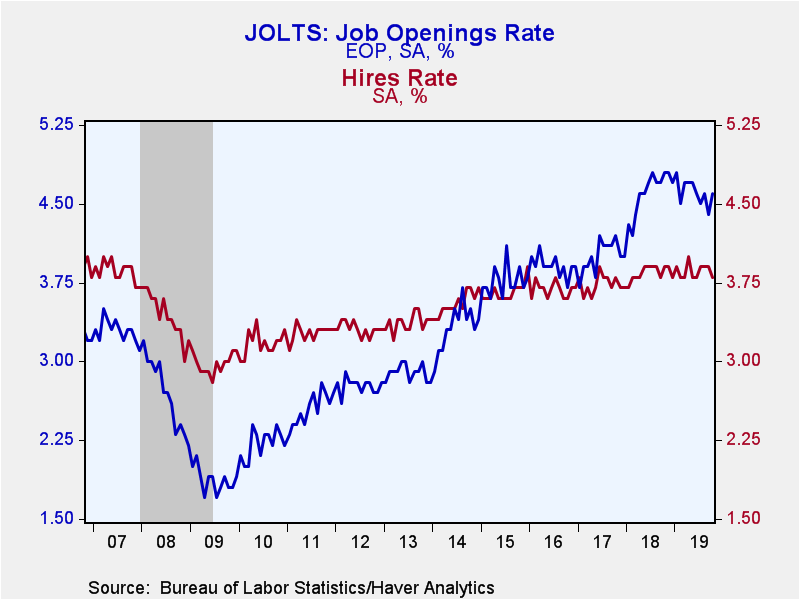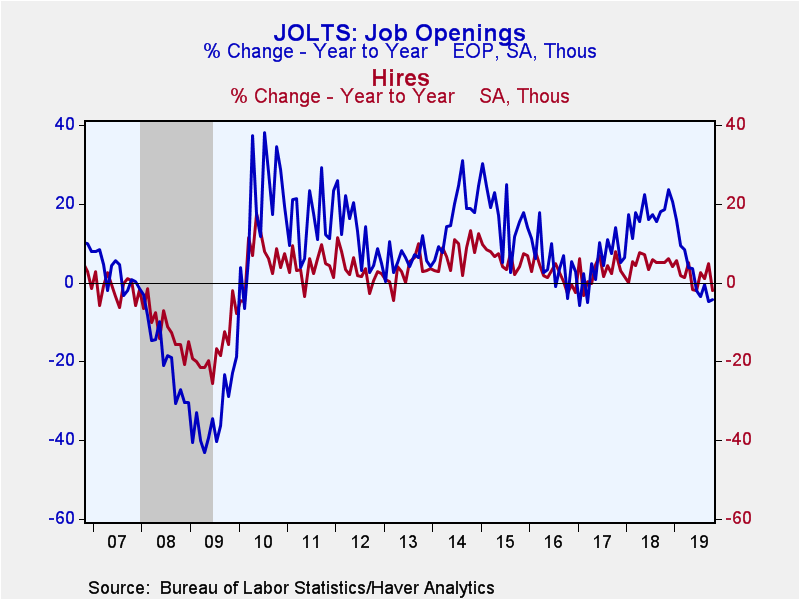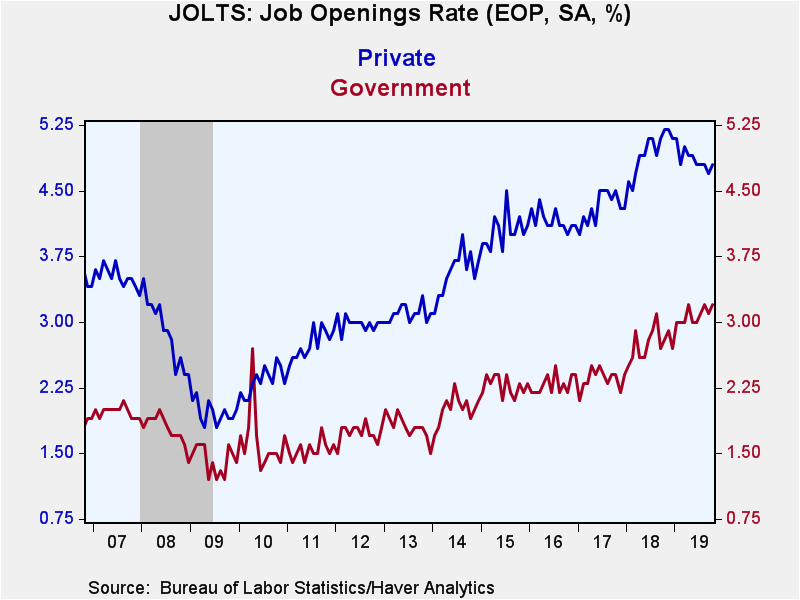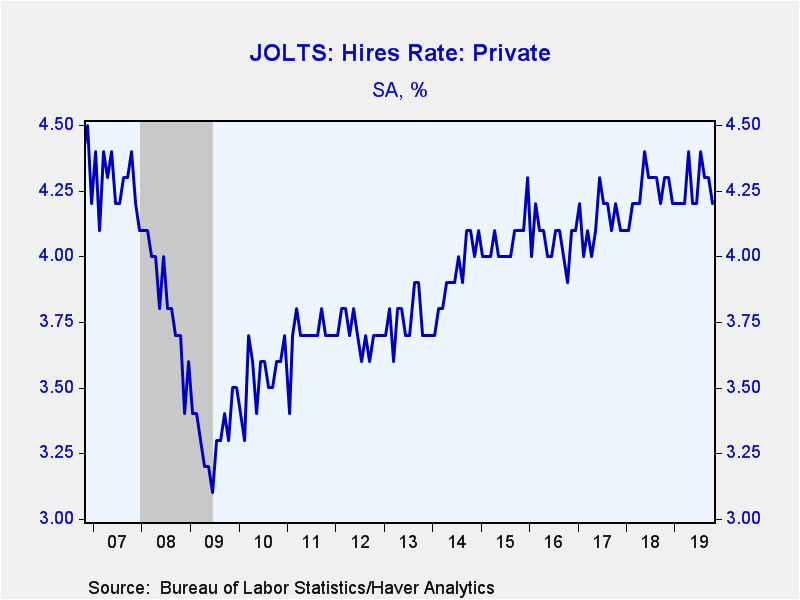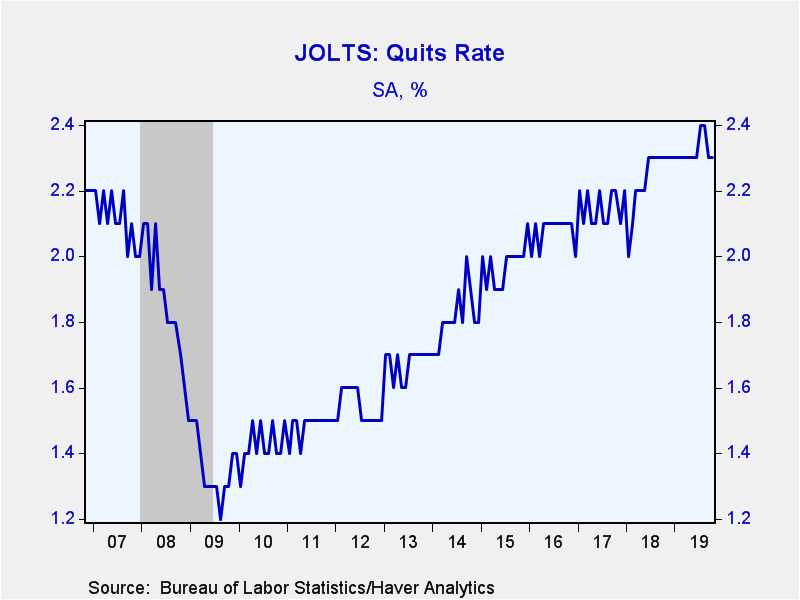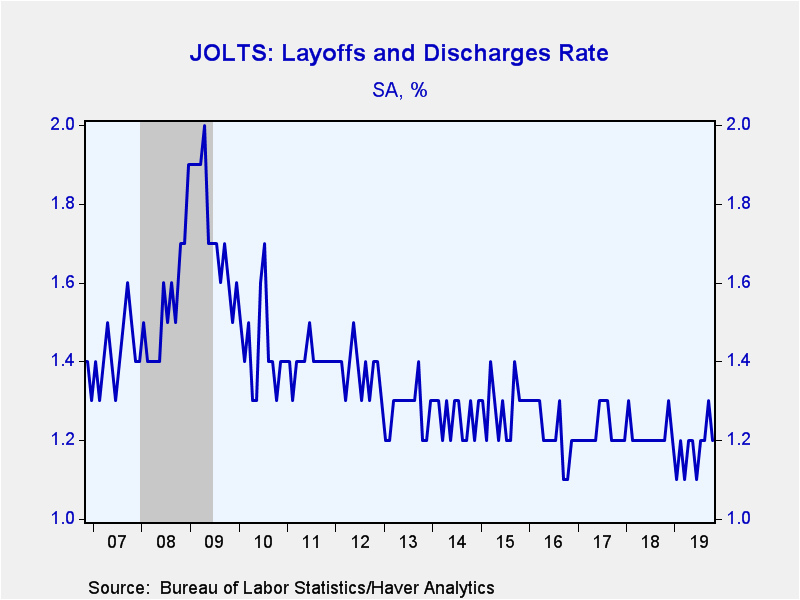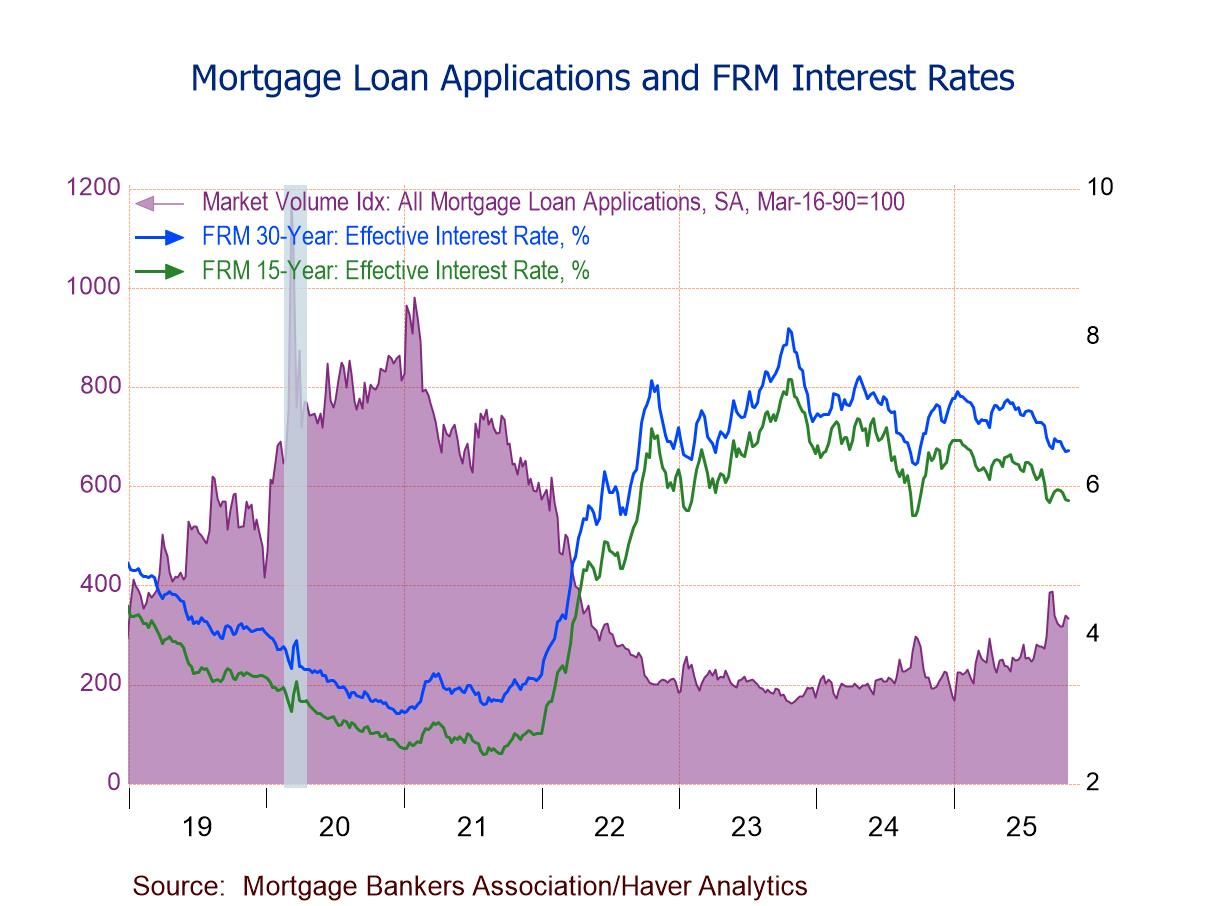 Global| Dec 17 2019
Global| Dec 17 2019U.S. JOLTS: Job Openings Edge Higher; Hiring Weakens
by:Tom Moeller
|in:Economy in Brief
Summary
The Bureau of Labor Statistics reported that the total job openings rate rose to 4.6% during October from an unrevised 4.4% in September. It remained, nevertheless, below the 4.8% record in January. The job openings rate is the job [...]
The Bureau of Labor Statistics reported that the total job openings rate rose to 4.6% during October from an unrevised 4.4% in September. It remained, nevertheless, below the 4.8% record in January. The job openings rate is the job openings level as a percent of total employment plus the job openings level. The ability to find workers to fill openings weakened as the hiring rate fell to 3.8% from 3.9%. It has been moving sideways since early last year. Employers became less inclined to let workers go. The layoff & discharge rate fell m/m to 1.2% and reversed the prior month's increase. Individuals were ready to seek new positions as the quits rate held m/m at 2.3% and has been trending higher for ten years.
The private-sector job openings rate rose m/m to 4.8%, but remained below the high of 5.2% twelve months earlier. In professional & business services, the rate fell sharply to 5.2% and remained below January's 6.5% high. In leisure & hospitality, the rate fell to 5.4% and remained down versus December's high of 6.2%. In education & health services, the rate increased to 5.0%, but also remained below earlier highs. In trade, transportation & utilities, the rate increased to 5.0%, a nine-month high. The openings rate fell to 4.0% in the construction sector and remained below the record 5.5% reached in April. In manufacturing, the rate improved slightly to 3.6%. The government sector job openings rate edged higher to 3.2% and remained well above the 2009 low of 1.2%.
The level of job openings rebounded m/m by 3.3% (-4.3% y/y) but has been declining since January's high. It remained near the lowest level since March of last year. Private-sector openings fell 6.2% y/y, but government sector job openings increased 16.8% y/y.
Hiring activity weakened in October. The private-sector hiring rate slipped to 4.2% and remained below July's expansion high of 4.4%. The rate in leisure & hospitality dropped sharply to 6.5%, its lowest level since February. In professional & business services, the hiring rate fell sharply to 5.3% and remained below the June 2017 high of 6.1%. The construction sector's hiring rate strengthened m/m to 6.4%. The hiring rate in trade, transportation & utilities fell to `3.9% and in education & health services the rate held steady at 2.9%. In manufacturing, the hiring rate eased to 2.5%, but remained below the July 2018 high of 3.1%. The hiring rate in government was unchanged at 1.6%.
Total hiring declined 3.1% (-1.9% y/y) after a 1.1% September rise. Hiring in the private sector fell 3.5% (-2.0% y/y). Government sector hiring rose 2.0%, but was unchanged y/y.
Individuals became less ready to find new work. The overall job separations rate fell to 3.7%, just below the expansion high. The private sector separations rate fell to 4.1%. The separations rate in government rose slightly to 1.6%.
The total level of separations slipped 0.1% y/y as private sector separations eased 0.2% y/y. The decline reflected a 2.8% y/y drop in professional & business services separations and separations in trade, transportation & utilities fell 11.0% y/y. Separations in manufacturing fell 11.1% y/y and reversed September's rise. In educational and health services, separations rose 0.3% y/y. Separations in leisure & hospitality rose 1.6% y/y. The construction sector saw a one-third y/y increase in separations. Separations in the government sector rose 1.4% y/y.
Confidence in finding work improved last month. The level of quits rose modestly after two months of decline and they remained up 1.2% y/y. The quits rate held steady m/m at 2.3%, and was sharply higher versus 1.3% at the beginning of the expansion. The private-sector quits rate rose to 2.6% and has increased from 1.4% since the fall of 2009. The government sector quits rate of 0.8% held steady m/m, but was double the rate at the beginning of the economic expansion.
The level of layoffs reversed its earlier monthly increases and fell 4.6% y/y. In the private sector, layoffs declined 4.9% y/y as the layoff rate retreated to 1.3%. It remained below the 2009 high of 2.2%. Layoffs declined 1.6% y/y in the government sector and the layoff rate was 0.5%.
The Job Openings & Labor Turnover Survey (JOLTS) dates to December 2000 and the figures are available in Haver's USECON database.
| JOLTS (Job Openings & Labor Turnover Survey, SA) | Oct | Sep | Aug | Oct'18 | Oct'17 | Oct'16 |
|---|---|---|---|---|---|---|
| Job Openings, Total | ||||||
| Rate (%) | 4.6 | 4.4 | 4.6 | 4.8 | 4.2 | 3.7 |
| Total (000s) | 7,267 | 7,032 | 7,301 | 7,593 | 6,405 | 5,616 |
| Hires, Total | ||||||
| Rate (%) | 3.8 | 3.9 | 3.9 | 3.9 | 3.8 | 3.6 |
| Total (000s) | 5,764 | 5,951 | 5,884 | 5,877 | 5,587 | 5,177 |
| Layoffs & Discharges, Total | ||||||
| Rate (%) | 1.2 | 1.3 | 1.2 | 1.2 | 1.2 | 1.1 |
| Total (000s) | 1,769 | 1,971 | 1,812 | 1,855 | 1,803 | 1,637 |
| Quits, Total | ||||||
| Rate (%) | 2.3 | 2.3 | 2.4 | 2.3 | 2.2 | 2.1 |
| Total (000s) | 3,512 | 3,471 | 3,601 | 3,469 | 3,209 | 3,105 |
Tom Moeller
AuthorMore in Author Profile »Prior to joining Haver Analytics in 2000, Mr. Moeller worked as the Economist at Chancellor Capital Management from 1985 to 1999. There, he developed comprehensive economic forecasts and interpreted economic data for equity and fixed income portfolio managers. Also at Chancellor, Mr. Moeller worked as an equity analyst and was responsible for researching and rating companies in the economically sensitive automobile and housing industries for investment in Chancellor’s equity portfolio. Prior to joining Chancellor, Mr. Moeller was an Economist at Citibank from 1979 to 1984. He also analyzed pricing behavior in the metals industry for the Council on Wage and Price Stability in Washington, D.C. In 1999, Mr. Moeller received the award for most accurate forecast from the Forecasters' Club of New York. From 1990 to 1992 he was President of the New York Association for Business Economists. Mr. Moeller earned an M.B.A. in Finance from Fordham University, where he graduated in 1987. He holds a Bachelor of Arts in Economics from George Washington University.


